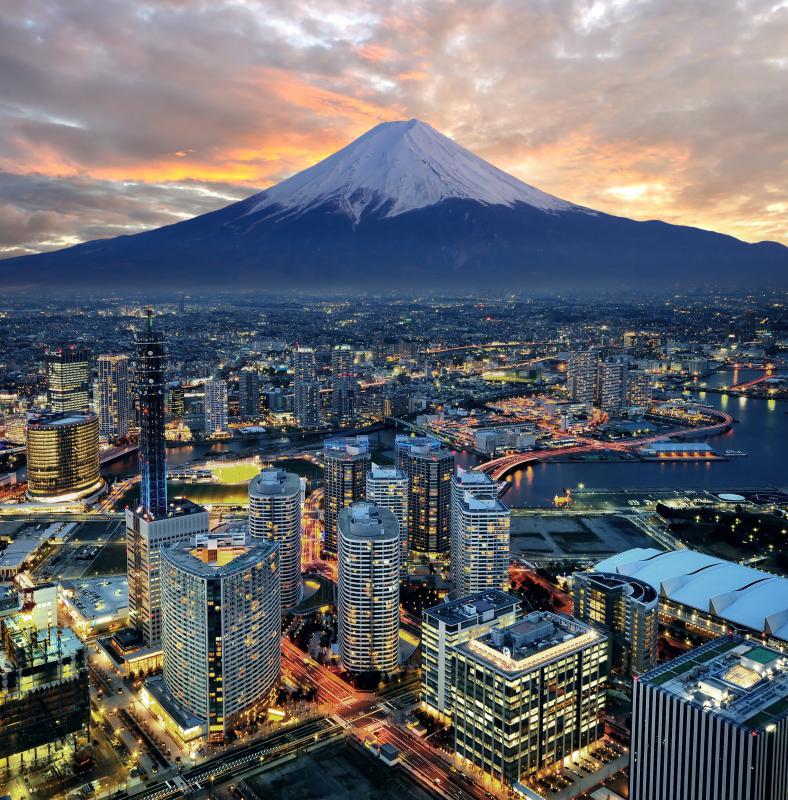At AllThingsNature, we're committed to delivering accurate, trustworthy information. Our expert-authored content is rigorously fact-checked and sourced from credible authorities. Discover how we uphold the highest standards in providing you with reliable knowledge.
What are Lenticular Clouds?
Lenticular clouds are unique clouds which typically form around hills and mountains, as a result of the way that the air moves. These clouds look quite distinctive, like giant flying saucers or something like lopsided stacks of pancakes. Many famous mountains around the world are often photographed with a cap of these clouds, including Mount Shasta and Mount Fuji.
You may also hear these clouds called altocumular standing lenticularis. They form when a current of moist air is forced upwards as it travels over a mountain, causing the moisture to condense and form a cloud. Sometimes the air is forced into a wave pattern, generating what is known as a wave cloud. Wave clouds can look like strings of discs spreading out from the leeward side of the mountain. They can also form miniature waves which sometimes look exactly like a choppy sea.

One interesting thing about lenticular clouds is that they look like they are perfectly stationary and frozen in time. This is not, in fact, the case. These clouds appear stationary because the flow of moist air continually resupplies the cloud from the windward side even as water evaporates and vanishes from the leeward side. These clouds can look like they are hovering for hours or days, until the wind or weather changes and the cloud disperses.
Observing and identifying lenticular clouds is generally fairly easy, because the clouds are so distinctive. If you ever see a cloud which looks like a flying saucer, a lens, or a giant beret, you're looking at a lenticular cloud. If you look around the cloud, you may see a geographical feature which is creating the conditions which lead to the formation of these clouds. If you don't see a mountain or hill, there is probably a current of air running in the opposite direction to create a wave cloud.
Many people enjoy photographing lenticular clouds because they look unusual and they can be quite stunning. If you happen to live near a mountain which is often wrapped with a lenticular cloud, you may find it interesting to photograph it every day, looking at the way the cloud moves and changes with the weather. After a few years, you may find yourself able to make weather predictions based on the presence, position, and shape of the cloud.
Frequently Asked Questions
What are lenticular clouds and how do they form?
Lenticular clouds are lens-shaped clouds that typically form at high altitudes over mountain ranges. They develop when moist air is forced to ascend over a mountain, cooling and condensing into clouds. As the air descends on the other side, it warms and the cloud dissipates, creating a stationary cloud formation that appears to hover in place.
Where are lenticular clouds most commonly found?
Lenticular clouds are most commonly found near mountainous regions around the world. They are particularly prevalent in places like the Rocky Mountains in North America, the Andes in South America, and the Alps in Europe. However, they can occur anywhere where stable, moist air flows over a range of mountains or other topographical barriers.
Can lenticular clouds be mistaken for UFOs?
Yes, due to their saucer-like shape, lenticular clouds are often mistaken for unidentified flying objects (UFOs). This confusion has been reported by observers and even pilots for decades. Their smooth, lens-like appearance and the way they can remain stationary for extended periods contribute to the UFO misidentification.
Are lenticular clouds dangerous for aviation?
Lenticular clouds themselves are not dangerous, but they indicate atmospheric conditions that can be hazardous for aircraft. The formation of these clouds is associated with strong wind shear and turbulence, which can pose risks for aviation, especially for light aircraft flying over mountainous terrain.
Do lenticular clouds bring precipitation?
Lenticular clouds are typically not associated with precipitation. They form in stable air conditions where the moist air does not rise enough to cool beyond the dew point to cause rain or snow. Instead, they are more indicative of wave patterns in the atmosphere rather than storm systems.
How can I distinguish lenticular clouds from other cloud types?
Lenticular clouds can be distinguished by their unique lens or almond shape, which is quite distinct from other cloud types. They are usually very smooth and well-defined, often appearing in stacks, known as 'lenticularis' formations. Unlike other clouds that move with the wind, lenticular clouds appear stationary, remaining in place as long as the atmospheric conditions remain the same.
AS FEATURED ON:
AS FEATURED ON:











Discussion Comments
What types of weather do lenticular clouds bring?
These kinds of clouds are usually found on the peak of the mountain or mountainous regions.
what is the elevation range for lenticular and kelvin helmholtz clouds?
what weather does a lenticular cloud bring?
what type of weather follows the lenticlar cloud or what weather does it bring?
what type of weather does a lenticular cloud bring?
what is the height of a lenticular cloud?
Post your comments